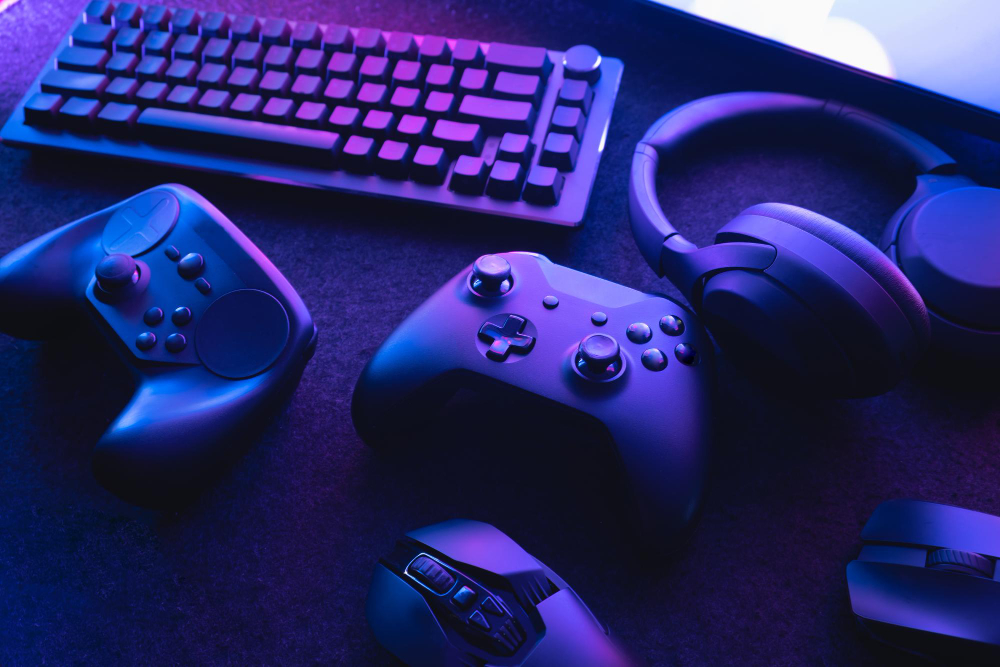Accessibility in Gaming


Embracing Disabled Players
In recent years, the gaming industry has undergone significant changes. This shift isn’t just in technology, storytelling, visuals and live betting experience. Accessibility has also become a major focus. The push for inclusive design is gaining momentum. This change is driven by awareness and advocacy for disabled players. For a long time, they faced barriers to enjoying games. Accessibility is no longer a niche issue. It’s now central to the future of gaming.
The Needs of Needy People
Over one billion people globally live with a disability, says the World Health Organization. Many of them play video games—or want to. But they often face obstacles. These include complex controls and a lack of visual or audio alternatives. For years, disabled players were ignored. They were offered few options. This led to an exclusionary environment.
Accessibility issues vary. They include physical limitations like limited motor control. Others face sensory impairments such as blindness or deafness. Some have cognitive or neurological conditions like ADHD or dyslexia. Solving these challenges needs thoughtful design. It also requires developers to rethink traditional approaches.
The Rise of Inclusive Game Design
Inclusive design starts with everyone in mind. It doesn’t treat accessibility as an afterthought. This shift is growing. Developers, studios, and platforms now support this approach.
Big companies are leading the way. Microsoft, Sony, and Nintendo are making accessibility a priority. In 2018, Microsoft launched the Xbox Adaptive Controller. It was built with input from disabled players. The device supports customizable inputs and assistive tech.
Sony has also made progress. The PlayStation 5 added features like customizable controls and screen reader support. It includes visual cues for those with sensory challenges. Meanwhile, more developers are adding accessibility into gameplay itself. They’re realizing accessibility improves the experience for all players.
Games Leading the Way
Some games stand out for accessibility. The Last of Us Part II is a strong example. Developed by Naughty Dog and released in 2020, it offers over 60 accessibility options. These include presets for vision, hearing, and motor challenges. Features include high-contrast mode, speech-to-vibration, and full control remapping.
Forza Horizon 5 is another standout. It added on-screen sign language interpreters—a first for the industry. The game also offers many difficulty and control options. These allow players to tailor the game to their needs.
Even small studios are stepping up. Celeste, an indie platformer, shows this. It includes an “Assist Mode.” Players can slow time, become invincible, or skip parts of the game. This helps more players enjoy the story and gameplay.
The Boost for Accessibility
Tech advancements are boosting accessibility. Tools like speech-to-text, text-to-speech, and haptic feedback help many players. Eye-tracking software is also becoming more common.
Community efforts are just as vital. Groups like AbleGamers, SpecialEffect, and Can I Play That? are making a big impact. They consult with developers. They fund adaptive hardware. They publish reviews and guides for disabled gamers.
Platforms like YouTube and Twitch are key too. They highlight disabled content creators. These voices help build awareness and community around accessible gaming.
Gaps to Suppress
Despite progress, issues remain. Some developers lack resources or knowledge. Indie studios often face budget limits. Big studios sometimes see accessibility as optional.
Another issue is lack of standardization. There are guidelines, like the Game Accessibility Guidelines. But there’s no industry-wide enforcement. This causes inconsistencies, even among major titles.
There’s also “checkbox accessibility.” This means adding features just to check a box. It doesn’t always reflect meaningful inclusion. Real progress requires feedback from disabled players. It takes testing and deep commitment—not just marketing.
The Future of Accessible Gaming
The momentum is building. As demand rises, the industry sees that accessibility benefits everyone. Features like subtitles and flexible controls help many players. This includes people in noisy places, beginners, or those with injuries.
Looking ahead, AI could change everything. Smart settings, voice commands, and real-time translation are just a few examples. These tools could reshape how games are played.
Education is another key. More design programs now teach accessibility. This prepares future developers to create games for all players.
Accessibility in Gaming
Accessibility in gaming isn’t a luxury anymore—it’s essential. The industry must grow in its understanding of inclusion. It’s not just about meeting rules or reaching new markets. It’s about making games a shared cultural experience.
Designing with purpose, listening to disabled players, and embracing new tech will lead the way. Games should welcome everyone. Every player deserves a seat at the table—and a controller in hand.
The post Accessibility in Gaming appeared first on Our Culture.






